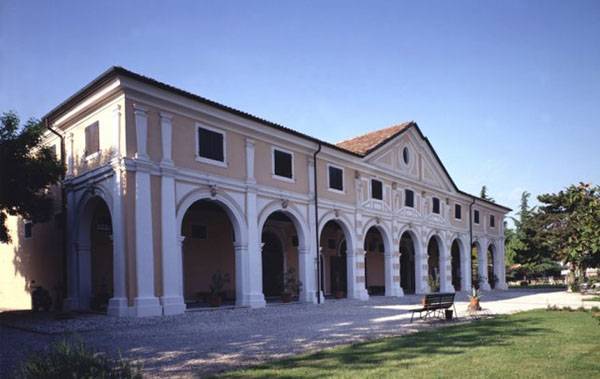How to revive prehistory thanks to 3D printing
Makars Summer School 3D scanning and printing gave a new life to an antique bronze Axe blade from Montebelluna Archaeological Museum.
When we visit a museum, we see a lot of interesting archaeological finds and artefacts, but sometimes it is not clear how they looked like in the past because some parts are missing. This was the main problem of Montebelluna’s Museum curators, which was finally solved thanks to 3D scanning and 3D printing technologies.
The importance of Montebelluna in the Ancient History
Montebelluna, our town, is located 60 km northern than Venice. It is now known to be the centre of the Sportsystem district, with a high concentration of industries designing and producing sports equipment and footwear.
However, many tombs discovered in the area and dating back to pre-Roman and Roman times (between 3000 and 2000 years ago), testify that Montebelluna was an important Paleoveneti centre. A large amount of archaeological finds, especially metal objects, have been discovered and are now preserved inside Montebelluna’s Museo di storia Naturale e Archeologia.
Museo di Storia Naturale e Archeologia di Montebelluna.
Digital Technology at the service of History
The Museum curator, Emanuela Gilli, explaining to Makars Summers School’s students, the Axe blade, they will 3D scan.
Since 2017, Lumi Industries in collaboration with 3D Archeolab organizes Makars Summer School, one-week theorical and practical course addressed to students and professionals, to learn how new technologies like 3D scanning, photogrammetry and 3D printing are becoming fundamental tools in Cultural Heritage Preservation and Enhancement. Montebelluna’s Museo di Storia Naturale e Archeologia is an active partner, and thanks to the local Soprintendenza foresight, is making available real archaeological finds to Makars participants who are trained on the field through the creation of digital models and 3D printed reproductions, which are donated to the institution. During 2018 edition, students were given the task, among others, to create the 3D model of an ancient bronze axe blade which was then 3D printed. The blade is elongated with a curved cutting edge and concave side margins. The wooden handle is no more there, leaving most of the times, Museum’s visitors puzzled and the staff in difficulty in trying to explain how it may have looked in the past. On the otherhand, such an antique relic, cannot be touched, with no possibility to replace the missing wooden handle, where the blade was mounted.
The Iron Age Axe blade
On the left the Situla (photo from La Tribuna di Treviso*), while on the right the representation of the axe in the Situla
This artefact can be dated between VIII and VII century b.C. Like many of the finds preserved in the Historical Museum of Montebelluna, the axe blade is a was delivered by a private citizen. It was found somewhere in the close Montello Hill at the beginning of the last century, therefore we do not have precise information on the discovery and it is impossible determine whether it was belonging to a funerary equipment, a blacksmith’s closet or if it was deposed in the nearby Piave river as a donation to water deities.
Scholars have a clear idea on how the whole axe must have appeared thanks to depictions of similar instruments in other artworks such as Situlas: elaborate bucket-shaped vessels highly decorated, most characteristically with relief running around the vessel body.
One of these bronze vases, depicting Paleoveneti everyday life scenes was discovered in Montebelluna’s outskirts and contains the image of a similar axe, which was a symbol of power therefore, a must-have in important people’s funeral equipment.
Makars Summer School students 3D scanning the Iron Axe blade.
Makars contribution to Montebelluna Cultural heritage.
Thanks to new digital manufacturing technologies and to the collaboration with Makars Summer School, the Museum received a faithful copy of this important artefact and decided give to a local skilful artisan, the task of adding a wooden handle to it tied with a leather belt, reproducing exactly the axe image represented on the Situla .
Now when admiring the important collection of the Museum of Montebelluna, visitors of all age can see the original axe together with the faithful copy equipped with a wooden handle, and have an immediate understanding of how an axe looked like in the Iron Age, making it easy to staff to explain our ancestors’ technology!
The original axe blade in the museum showcase and the 3D printed copy with the missing handle back.





